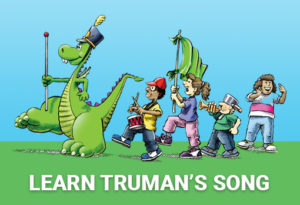Kidshape – November 2014
Regular exercise can help kids do better in school Physical activity may not be the first thing parents or teachers think about when they want to boost a child’s academic performance, but evidence supports the notion that a bit of exercise for the body is beneficial to the brain as well. In fact, kindergarteners who participated in Build Our Kids’ Success, a free before-school program involving physical activity and nutrition education, had significantly improved memory skills as rated by teachers, compared to their peers who did not participate. A study of the children’s performance also concluded that those who participated in the program exhibited good behavior in the classroom. “A sedentary life and poor eating habits can lower kids’ performance in the classroom and start a cycle of health problems later in life,” says Kathleen Tullie, founder and executive director of BOKS and the director of Social Responsibility for Reebok. “Simply stated, a healthy body and a healthy brain go hand in hand.” So how can you incorporate more healthy habits into your family’s routine? • Active weekends: Instead of a lazy Saturday or Sunday, get outside and get moving. Take a soccer ball to the park for a pick-up game or hike a local trail. Make exercise on the weekends a regular habit for your family, and those habits will extend to the rest of the week as well. • Fuel throughout the day: A hearty breakfast sets kids up for a great day. Follow that up with a healthful, satisfying lunch and snacks such as nuts and fruit to help kids avoid the pitfalls of the junk food machines. • Cook together: Take-out is great when you’re crunched for time, but be sure to cook at home at least a few times a week. Homemade meals are not only one of the few ways you can be exactly sure of what you’re feeding your family, but also the act of cooking together is a great opportunity to impart some lessons about nutrition and eating right. • Bedtime: Adequate sleep is crucial for a healthy, functional mind and body. Setting a regular bedtime and sticking to it is best to ensure kids get a full night’s rest. • Volunteer to get your school involved: Children should have one hour or more of physical activity daily, according to the Centers for Disease Control and Prevention. Unfortunately, physical education class may not be sufficient. Investigate what other opportunities your child’s school has for physical activity, such as before-school programs like BOKS or after-school sports. If your school doesn’t have such a program in place, look into starting BOKS at your school. BOKS, for example, can be run by anyone — parents, teachers, the school nurse or a community activist. To learn more, visit www.BOKSKids.org. Healthy habits will not only reduce your child’s risk for such problems as obesity, diabetes and heart disease; they can help prime children for more success inside the classroom and beyond. So give your children a leg up and encourage them to get moving.





